Some more photos taken on Australia Day 2015:
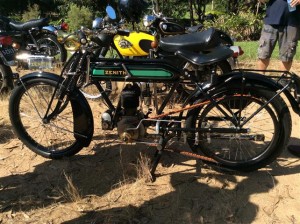
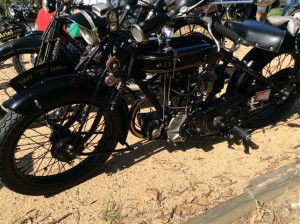
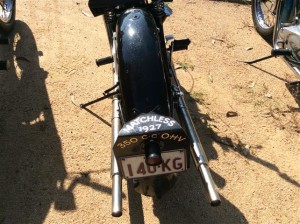
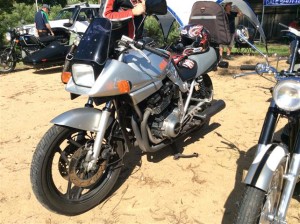
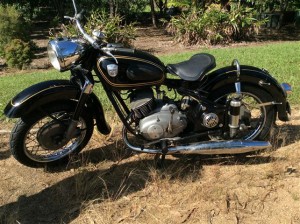
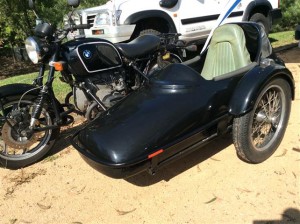
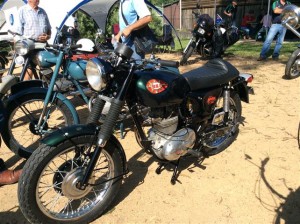
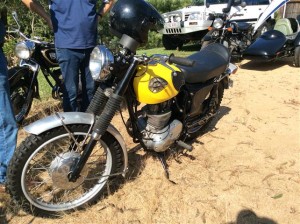
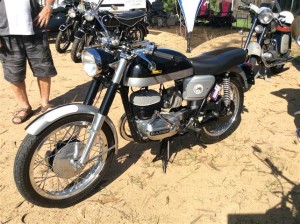
In tomorrow’s post I shall explain the meanings of the different “classes” of historic motorbikes.
Some more photos taken on Australia Day 2015:









In tomorrow’s post I shall explain the meanings of the different “classes” of historic motorbikes.
Every year at the Samford Historical Museum there is a special Australia Day celebration.
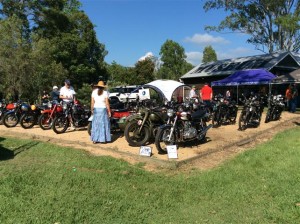
One of the many features is a display of motorbikes by members of the Historical Motor Cycle Club of Queensland.
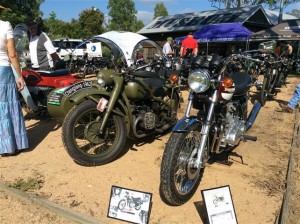
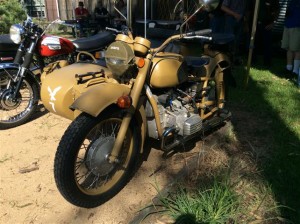
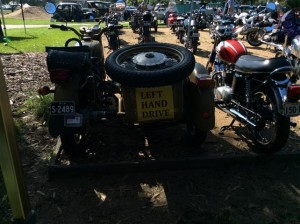
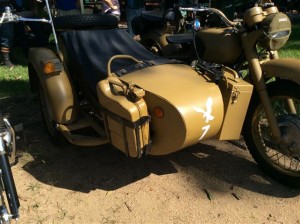
The day was fine and sunny which makes the taking of photographs more difficult because of the contrast between areas of light and shade.

About forty bikes were on display although only a few will be shown here.
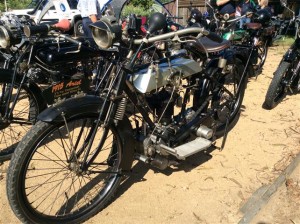
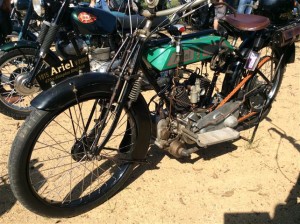
I shall add some more photos from this event tomorrow.
An Alpine Rally experience from long ago.
To explain the title, when I was a boy, the blackfellers (our term then for Australian Aborigines) who lived in the country all around us used to sleep with their dogs to keep them warm at night. If it was a cold night they would refer to it as a “Two Dog Night” because a man needed two dogs to keep him really warm. Occasionally there would come a night that was absolutely freezing; they would call that a “Three Dog Night.”
From the late sixties, I used to go every year on my motorbike to camp at the Alpine Motorcycle Rallies. These were held during the June long weekend at two different locations in alternate years: one year the rally would be at a creek off a bush track in the Brindabella Ranges not far south of Canberra; the next year it would be held at Yarrangobilly where there was a campground near a bridge across the Yarrangobilly River a short distance past Rules Point. This location is very roughly halfway between Kiandra and Talbingo or halfway between Adaminaby and Tumut or halfway between Cooma and Gundagai on the Snowy Mountains Highway. While I understand the Snowy Mountains Highway is now a sealed road, in those days it was all gravel.
I am not sure which year it was now, but the rally was at Yarrangobilly and I rode my bright Boeing-red Yamaha trail bike fitted with a Tilbrook Tom Thumb sidecar. It was whichever year was the coldest ever at Yarrangobilly.

The little Tilbrook was fully loaded with a four-man tent complete with all necessary poles and pegs, a tarpaulin, extra tent poles and pegs and plenty of extra guy ropes, a sledge hammer, a shovel and assorted tools, an “Antarctic” down sleeping bag, an air matress, some space blankets, some additional blankets, a few changes of clothes, a gas cooker, a billy, assorted cooking pans, plates and cutlery, and enough tinned food to last for ages. In short, we carried everything we needed to make a home away from home. My mate Graeme, from Paynesville, had his BMW piled high with a similar load of camping gear.
We left Bairnsdale early in the morning and headed East on the Princes Highway. At Cann River we filled up and turned North on the Cann Valley Highway. After the 57 miles (92 km) of gravel highway it was good to be on bitumen again as we headed into Bombala. We warmed up for a while in front of the fire at the pub before continuing through Nimmitabel to Cooma where we swung left onto the Snowy Mountains Highway to Adaminaby where we bought persishable supplies including our milk which was in cardboard one-litre cartons. From there it was a short run through Kiandra and Rules Point to Yarrangobilly.
It was mid-afternoon when we rode down the hill into Yarrangobilly and the welcome signals of campfire smoke from the rallyists who had arrived before us filled the valley. We selected a nice flat patch of grass quite close to the river, set up camp and cooked dinner. As we cooked, we were visited by a steady stream of other rally goers who shared the normal chinwagging about their rides in from all points of the compass. Dinner dispensed with and dishes washed, it was time to start the steady stroll from one bonfire to another at each of which we alternately warmed our buttocks and our fronts as tall tales and true were swapped between riders of their exploits over the years. It was probably quite possible to estimate the amount of Stones Green Ginger Wine that had been consumed around each fire by listening to just how tall those tall tales had become.
Now the campfire stories normally continued until well after midnight, but this year it became too perishing cold to stay out of the tents any longer. No matter how big and roaring the fire, and how interesting the yarns, it was just impossible to stay warm. The only clothing I removed was my Belstaffs and my boots. As I crawled into my Antarctic sleeping bag, I was wearing: cotton athletic singlet, cotton Briefs, cotton thermal top, cotton long johns, cotton skivvy, cotton (denim) Motorbike Scrambler jeans, cotton fleecy-lined WindCheater, a thick hand-knitted woollen jumper, and about three pairs of socks: cotton socks, then woollen socks, then Holeproof Explorers. I was not in bed long before I found myself far too hot, so I shed a few layers of clothes and didn’t feel comfortable until I was down to my long johns. As the air was bitterly cold on my face, I tightened the sleeping bag hood so there was only a tiny hole remaining for my breath to enter and escape.
I woke at first light after a splendid night’s sleep and began to unzip my sleeping bag. Then it was a mad scramble to put on all of my clothes as quickly as possible and then crawl back into the sleeping bag to warm up again. After I was suitably warmed, I exited the tent to find Graeme already up and with a fire lit. I grabbed the billy and headed for the river which sounded strange: it was almost silent and the sound of flowing water sounded strangely muffled and distant. The reason for this was soon apparent, the river was covered by a thick skin of ice. I hit the ice a few times with the billy but only seemed in danger of wrecking the billy; I was making no difference to the ice.
I went back to my sidecar and grabbed my largest hammer and went back down to the river. After a couple of smashes I had made a hole in the ice through which I filled the billy. I hurried back to the fire and observed that a disc of ice had already formed on the water in the billy. The fire soon boiled the water and we made our tea. As we both took milk I reached in to get one of the cartons of milk. It was a solid brick. Hard as granite. To get at it, we had to peel off the cardboard carton and place the milk on the breadboard where we used the bread knife to slice off thin tiles of milk to put into our tea. Everyone else around was faced with the same problem, so we just kept slicing at the milk with our bread knife until all the riders around had a tile to put in their tea or coffee.
One of the guys in a neighbouring tent was an amateur meteorologist and had mounted on his tent pole a Maximum-Minimum Thermometer. According to this instrument, the temperature during the night had fallen to eleven degrees Fahrenheit (almost -12ºC) and had only risen by half a degree. When I heard this, I commented, “That was really a fair dinkum Three Dog Night!” and promptly had to explain for the younger townies just what that saying meant.
Someone decided to try to ride his BMW straight across the river on the ice, but the ice broke and the bike fell in, so several guys had to fish it out of the river.
While talking about BMWs, none of them could be started so everybody was borrowing gas cooking stoves to heat up the bottoms of their motors so the bikes could be started. Meanwhile, my bike was a single cylinder two stroke with no oil in its engine apart from that in the petrol, so it started on the first kick.
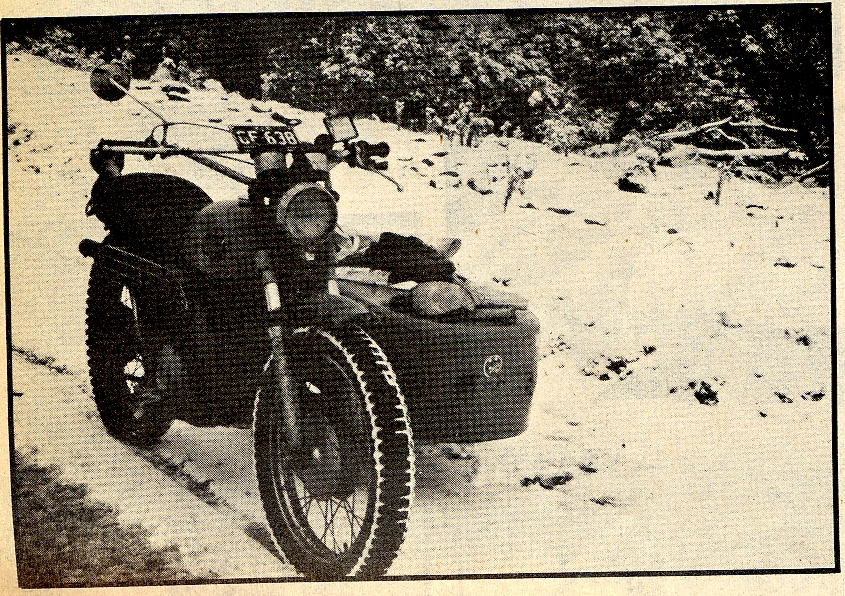
During the day a trip was made towards Tumut to inspect part of the Smowy Mountains Hydro Electric Scheme and about thirty or more riders fell off their bikes on a very slippery icy patch of road. I had already seen the hydro power stations before, so I didn’t bother going on the ride and kept the fires burning at the camp and collected more firewood ready for the night. It was only when all the bikes came back with makeshift clutch levers or sticks for footpegs that I learned how many riders had gone down on the road in the icy conditions. Although the outfit would have taken the ice in its stride, I was kind of glad I had stayed back in camp for the day, as collision with a sliding bike might well have been a possibility.
Sunday night didn’t get nearly so cold and the river did not freeze over again.
But that Three Dog Night was definitely one to remember.
Further to yesterday’s post, and just to backtrack a little, I need to mention the history of that six-passenger chair. It was only fitted to the Triumph for a little more than a week, or certainly less than a fortnight. It was removed from the Dusting chassis the same afternoon that we had gotten rid of the queen sized bed.
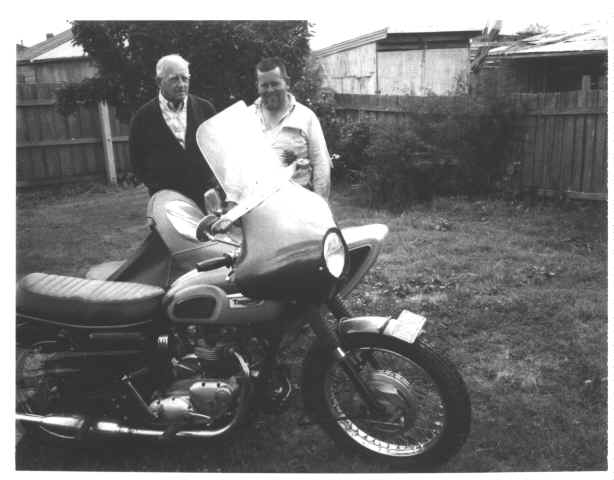
A fortnight earlier, I had happened on an advertisement in a newspaper which read in part: “Double Adult sidecar for sale; seldom used. . .” I rang the number and got the address and set a date and time to go and inspect it. The advertiser warned me that it was big and heavy: he had built it with a double purpose: it was to be a camper that he could sleep in and also that he could carry two very large mates in. He warned me that the sidecar was very long, since he had designed it to give plenty of legroom to men who were both 2 metres (6 foot 7 inches) tall. We agreed on a price and I rode my triumph outfit there with the Dusting sidecar body already removed and with just a few tools in a backpack ockie-strapped to the sidecar chassis.
It was long after dark and already bitterly cold when I arrived at the address in Glenroy.
We went out behind his shed and he lifted the tarpaulin off an enormous red construction of wood and seaply. The body was well over a metre (3 foot 4 inch) wide and probably over three metres (ten feet) long. The front was semicircular and raked back to give it some sort of ability to cut through the air. In the dark, I could see that seats were fitted, but couldn’t really see what they were made of. While it was even larger than it had seemed over the phone, I decided that for the price, it had possibilities, so I handed over the cash.
We used four coach bolts to fasten the body to my chassis working by torchlight.
I rode back to Morwell noticing that, despite the lower sidecar gearing of the bike, I had to keep changing back through the gears for every hill. Every time I opened the throttle, the outfit would lurch to the left; every time I shut the throttle or braked, the outfit would try to swerve to the right. It was a long, slow ride home under the frosty light from a full moon. Long after midnight I turned it into our driveway, parked on the front lawn, and quietly snuck in the back door and went to bed.
In the morning light I went outside to see what I had bought.
The backboard of the front seat was removable and had padded foam-filled upholstery glued to its front side. The front seat itself was very wide and very long and might quite possibly have originally come from a bus or some other form of public transport. It was so wide that we soon ascertained that two of my siblings could easily sit side-by-side on it. The rear seat, way down there at the back, was the same width, but the seat cushion was much shorter. It was fixed to the floor and the backrest was permanently fitted to the rear of the bodywork. It was my brother who first realised that the front seat could be slid backwards and, if only slid partway and the backboard was re-inserted on top of it, could be used to provide short seats facing both ways. A quick gluing of cloth-covered, foam-filled, cushioning material to the rear of the front seat backboard ensured comfort for any passengers who might be seated facing backwards in the rear compartment.
Our intention at first was to ride around town with three of my brothers in the sidecar. Mick stuck his head in the front door and yelled, “Who wants to go for a test ride in Phil’s new sidecar?”
The entire family came trooping out (I have eight siblings), and started getting into the chair which had been set up with the front backboard dividing the front seat in two. In a few moments there were six young Smiths seated in the chair. I kick started the bike and mounted the pilot’s seat. My sister Karen said, “Hey, wait for me!” as she climbed on the pillion seat. So there we were: six in the sidecar and two on the bike.
I clicked it into gear and tried to let the clutch out. My Dad started pushing on the back of the sidecar while my Mum pushed the luggage rack on the back of the bike. The smell from the burning clutch was pretty severe, but we were soon rolling! We drove up to the main street and did a couple of laps of town: Commercial Road, over the railway, High Street, over the railway, and around again. We coasted in to the parking lot near the railway station (universally known to the town’s young hoons as “Drag Square”) where there was a good slope down for us to get started again, and switched off.
Two carloads of police arrived, piled out of their cars and surrounded our outfit. They looked at how everyone was seated and that the seats fulfilled all legal requirements, and agreed that it was roadworthy and legal. “But I bet the clutch of your Trumpy is burned out within a week,” said the Senior Constable. “Now let’s see how she goes!”
I kick started the Trumpy and several of the police officers helped with a push as I let out the clutch. We did one more complete lap of town, waving cheerily to the police who were still in the parking lot, and then headed home.
The following morning I rode the outfit to the school where I was then the Headmaster, Dumbalk North Primary School. I cannot remember now whether I took any kids for a ride, but I do remember that the exceptionally heavy sidecar was a real handful on the steep hills of South Gippsland.
The following weekend, we used it to dispose of the unwanted queen-sized bed and then lifted the body off the chassis. We could almost hear that Triumph heaving a great sigh of relief!
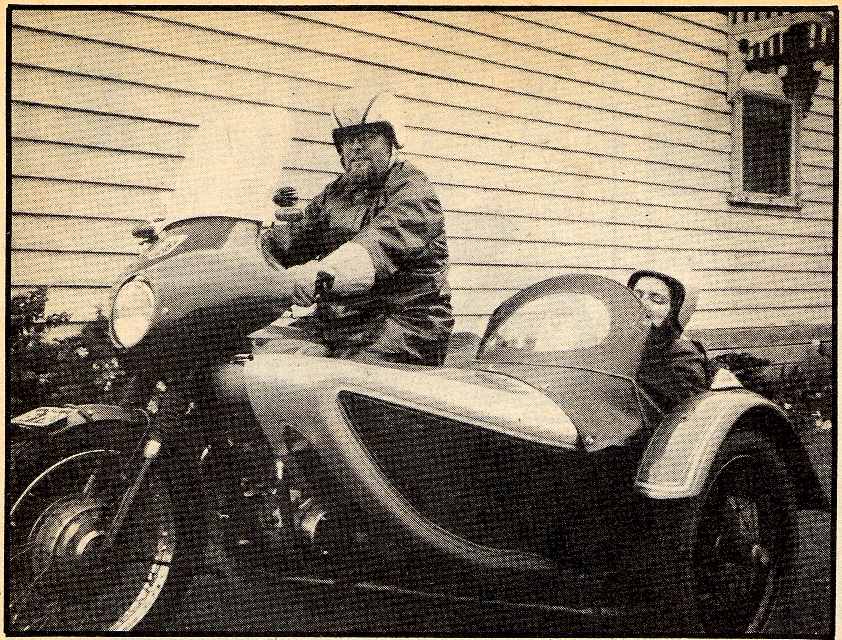
A week later, we observed another ad in the paper: “Wanted: large double-adult sidecar body to fit Dusting chassis on Indian motorcycle . . .” and I was able to sell it for the same price I had paid for it only a fortnight earlier!
This story dates to about the latter part of the year 1969.
I have carried solo bikes on sidecars and sidecars on sidecars, but the day the police didn’t really want to see me was the day I carried a queen sized bed and mattress on a sidecar.
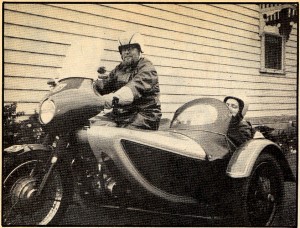
The bike was a 1969 650cc Triumph Trophy TR6 and the chair was a 1946 Dusting Chassis fitted with a six-passenger home-built body (that’s two passengers sitting side-by-side facing forwards up front, two passengers seated side-by-side facing rearwards behind them and two more passengers seated side-by-side facing forwards at the rear of the limo-chair, in case you were wondering). I removed the windscreens from the chair so it was a wide flat long top with openings for all the passengers. The flat top of the sidecar was almost exactly level with the dual seat and the rear luggage rack on the Triumph.
My parents had obtained a new bed and their old one was really had it and there was nowhere else in our house to store it. We only had a sedan car or a station wagon to choose from and neither had a roof rack. How to get Mum and Dad’s old bed to the rubbish tip?
I looked at my sidecar and had a sudden visualisation of how it would look if I used a screwdriver to remove the windscreens off the body of the chair. It only took a minute to do just that! Then I placed the queen size mattress face down on top of the chair and bike, then I placed the bed on top of the mattress and used plenty of ockies to tie everything on.
To actually ride the bike with the bed on board, I had to straddle the front of the fuel tank, since the mattress covered the back half of it, and I rode standing up on the footpegs with my legs resting on the back of the handlebars, moving each leg forwards and back as I turned the handlebars.
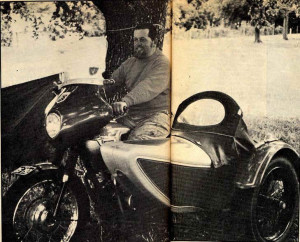
With my brother Mick riding escort on his BMW in case anything went wrong, we set out.
We only had to carry it about three kilometres (say two miles) from Mary Street Morwell to the Latrobe Road Rubbish Tip operated by the then Morwell Shire Council, but half-way there, the police highway patrol happened to come along. The officer pulled me up: “Is that rig safe to drive when loaded like that, Smithy?”
I replied, “Do you reckon I’d be riding it if it wasn’t safe?”
He threw up his hands in mock horror and said, “I’m going to pretend I never saw this; no one would ever believe it if I reported it anyway: for God’s sake don’t hit anything on the way!”
“Okay, thanks mate!”
And away I went.
Back then, photography was restricted to the rich, which we weren’t, but I dearly wish we had gotten someone to take a picture of that loaded chair!

During my time with the Ballarat Rovers Motor Cycle Club Stunt Team, there came a weekend where we were performing during the morning somewhere in Central Victoria; it might have been Bendigo; it might have been Castlemaine; I cannot remember every detail at my age! Most of our performances took place in the afternoons or in the evenings under lights, but this particular one was in the morning. One of our acts was named “The School Bus” and began with sixteen or twenty members of the team spread out at well-spaced intervals all around the perimeter of the showgrounds or racetrack. As a 1942 WLA Harley, brightly painted in fire-engine red, rumbled slowly past, each member would scramble aboard and take up his pre-assigned position until we did a final lap with about twenty bods on board that Harley.
This particular morning, my assigned position was as the last person to board the bike and I was supposed to stand with the toes of my gym boots standing on the rounded tops of the two tail lights – the rearmost part of the bike. During practice the previous afternoon, the act had gone faultlessly: we had all rapidly attained our designed positions in a professional manner, and the act had looked really outstanding. But this morning, the position from which I had to mount had been in shadow since dawn, and the grass was very wet with the overnight dew. My spotlessly polished white gym boots were also well polished on the soles from excess wear in previous practices and performances. Now, wet rubber does not possess much traction. . .
As I leapt up onto the tail light, I felt my foot slip straight off and found myself falling. I immediately, instinctively took up the Commando Roll position that I had been trained to do when I had started with the Stunt Team. By adopting this position during a fall, a motorcyclist can be virtually guaranteed of no injuries resulting from the fall. As I hit the deck and commenced the roll I could hear the tremendous roar from the crowd in the grandstand. I forced my body to do one additional roll more than was needed: I had fallen off; therefore I might as well make it look more spectacular!
I leapt to my feet, looked rapidly around pretending to be momentarily lost, and then sprinted after the Harley. The crowd was cheering wildly in the stands. As I approached the bike I passed a speaker post and heard the commentator, John Palmer saying, “Can Clanger make it on board this time?”
The crowd roared even more.
I sprang up onto the tail light and deliberately “lost my balance” and fell again. This time I sprang up after only a single roll on the deck, raced after the Harley again and sprang aboard. Holding on with only one hand, I then took some exaggerated bows while facing the grandstand. The crowd were all standing up and cheering and clapping.
They loved it, and so did I!
After the show had ended, we held our usual post performance de-briefing. There was division in the camp over what had happened: half insisted that we were supposed to put on a professional performance and a professional should not fall off the bike during a stunt, the other half said it was great that I had fallen off, since the reaction from the crowd was greater than we usually experienced.
Most of the members had not seen what had happened, since they had been aboard the Harley and were mostly facing forwards, they had only felt the extra slight lurches of the bike as I had boarded three times instead of once; they had also heard the tremendous noise from the crowd. Those who had been standing on the mudguard supports on each side at the rear of the bike had seen the whole thing and had cacked themselves laughing at my antics.
The club remained divided over this issue for quite some time after that day. I volunteered to deliberately fall off the Harley at future shows. Some thought it would be great; others thought it would detract from the performances. It was decided that the rostered commentator would call the shots and I should alter my performance depending on what he said. He would comment as the Harley was approaching my boarding point something like, “Last week during our performance at XXXX, Clanger didn’t make it and fell off the Harley.” If he continued, “but this week he has put in a lot of extra practice and promised to give us a much more professional show,” I was not to fall off. However, if he continued, “he has been practising hard all week and has improved a lot, but we still reckon you all ought to start praying that he can make it,” I was to go ahead and do some spectacular falls.
For a little while I think I fell more often than not during performances, but it wasn’t long before my work took me away to the opposite end of the state and I left the Team. After that, I think only the Team Clown regularly fell off, but all the uniformed stunt riders acted very professionally and stayed aboard the bikes.

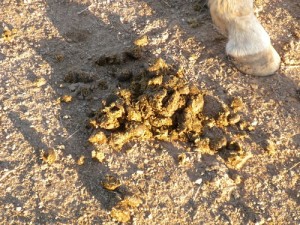
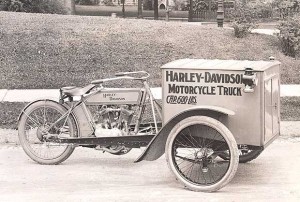

A while back, a visitor to our home laughed when he came into the kitchen and saw me preparing to do the dishes. He then asked me why I sorted the dishes so meticulously before washing them. “How come you don’t just chuck ’em all in the sink like I do?”
Well, let me explain. I think it is probably related to my Autism.
I started washing dishes standing on the little green kindy chair at the kitchen sink in Terang when I was about five years old. My mother, whom I suspect also may be Asperger’s Syndrome, used to stack the dishes very neatly for washing, everything lined up and in order.
The small bowls nestled within the larger bowls, so these were the ones you washed first. (the glasses and cups were actually washed before the larger dishes, but these are stacked at the back – so they cannot accidentally be knocked off the bench). When you placed bowls and plates on the cups (or, later on in life, in the dishrack) to dry, the small ones again nestled within the larger ones even though they were now all upside down and tilted.
Similarly, the plates were invariably placed beside the sink with the largest ones at the bottom of the stack, the medium ones in between and the smaller “bread and butter” plates near the top, followed finally by the saucers. Then the saucers are washed first, the bread and butter plates next and so on up to the dinner plates and, if present, the large serving platter. This is how it should be. To me, this is just the correct way.
But since then I have lived with a multitude of people during the intervening 63 years, and almost all of them seem to have no concept of the “only correct” way to stack the dishes. Bowls in jumbled order, plates interleaved amongst the bowls, large items on top of small items. You name it, they break the rules!
I have also usually sorted out the cutlery before beginning the dishwashing. For the “normal” cutlery, I start at the left with the soup spoons all stacked neatly in a single stack followed by the desert spoons stacked similarly. Next are the larger dinner forks followed by the smaller desert forks. To the right of the two stacks of forks, the teaspoons are stacked neatly and to their right the stainless-steel knives are placed neatly. Sometimes, the order of the stacks may vary, but the order of the washing of them does not. The knives, of course, are absolutely unstackable due to the predominantly ovoid cross section of their handles.
Then there are all the other odds and ends. About 20 to 40 cm to the left of the soup spoons, I start with any plastic serving spoons or ladles and the wooden spoons with the chopsticks neatly placed to their right. Next are any potato peelers, skewers, pizza cutting wheels, serving tongs, along with any other nondescript items that might have been used during the preparation or consumption of the meal. Between these and the soup spoons are any sharp carving knives, bread knives, steak knives, or fruit knives along with any other miscellaneous sharps.
The exact order of each of these stacks is actually quite important to me, as it relates precisely to where they will be later in the washing, drying and putting away process. Of course, not all of these items are present after each meal! More recently, I have begun to vary the order of the stacks, simply because I do not always have to work from right to left, and also because my daughter will often be washing them anyway and the order does not seem to matter as much to her, even though she also is an Aspie!
We have a stainless steel cutlery draining device in the shape of a truncated cone which stands on the bench behind the sink to the right of the taps. This is like a colander, in that it has holes all over its surface. The cutlery will fit in best if it goes in teaspoons first, then small forks, then larger forks, then dessert spoons, then soup spoons. All of these are placed working side downermost with handles uppermost in neat stacks according to types. Now the stainless steel knives go in pointed ends down and handles up in two stacks, bread and butter knives to the right and dinner knives to the left behind all the other cutlery.
Next the sharps are all done one at a time and placed in the drainer with the sharp ends down. The sharps are always handled individually since these are never to be placed in a heap out of sight under the suds in the sink. I was taught that method for safety reasons 63 years ago, and I never vary from it. Finally all the odd chopsticks and serving spoons, ladles etc. are placed smallest end first into the cutlery drainer or the side of the dishrack.
When the cutlery is being dried and put away, I open the odds and ends drawer first and work in order through all the ladles, chopsticks and whatever else belongs in that drawer. It is all at the top of the cutlery drainer. Next all the sharps are dried and put in their place at the left side of the top drawer. Then all the dinner knives followed by the bread and butter knives; then the soup spoons and the dessert spoons, followed by the dinner forks and dessert forks. Last of all, the teaspoons end up in their smaller slot in the cutlery drawer.
So you see that the correct stacking of the cutlery on the sink before washing is determined by where they will end up after they have been dried and put away. It all seems very logical to me. Why everyone else has to criticise the way I do the dishes is incomprehensible to me. I always tell anyone who does that if they don’t like the way I do it, then they are welcome to do it their way, even though I know it is the wrong way.

The same ordering of things into each item’s “correct” place has always been evident in just about anything I do in life. The tools I use for working on the motorbike are all in their correct place and if anyone else borrows one and puts it back on the wrong shelf in the shed, it can take me ages to find it.
I always park the motor mower behind the motorbike in the shed, because the bike will be used more frequently than the mower. Thus, while I am mowing the lawns, the motorbike is always out in the yard instead of in the shed!
I just think there is a logical order for everything.
I originally wrote this article shortly after purchasing my first sidecar in 1968. Boy did I have a learning curve!
You see, when you are driving a sidecar outfit, the process of steering it is a totally different matter to the process of steering a regular solo motorbike.
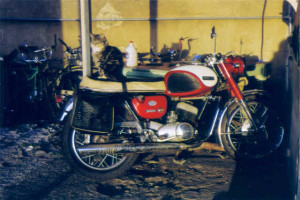
On the solo machine, you just lean it into the corner and around you go. But scientifically speaking, how exactly do you lean it into the corner? Well, believe it or not, if you are going to take a corner to the right, you actually begin that corner by steering to the left. As you turn the front wheel to the left, the bike begins to fall over to the right … after all, there is nothing to hold it up. As it begins to fall, the forward motion is causing it to want to stand up again. These two forces balance each other out and the bike kind of “falls around in a curve”.
Now look what happens if you add a sidecar to the same bike. All of the controls are the same. The motor gearbox and clutch are all the same. But the steering … Sheesh!!!
Let me describe briefly my first attempt to ride in the Eastern Gardens at Geelong:
I guy named Mac from Pratt and Osborn Motors in Geelong had ridden my outfit to the Eastern Gardens while I was on the sidecar. Safely off the trafficked roads, he got off and indicated that I should mount the saddle of the bike and have my first ride.

I let the clutch out and the bike started moving. The path turned gently to the right. Now with some 60,000 miles or thereabouts of riding experience I reckoned I knew pretty well how to turn a motorbike around a very gentle right hand curve. But suddenly I discovered that this outfit seemed to have a mind of its own! I crossed the lawn on the left and then through the flower beds and then had the sense to pull the clutch in and hit the brakes just in time to avoid mowing down a row of standard roses.
By this time Mac was killing himself laughing at the expression on my face. I felt more like Mulga Bill!
We pushed the outfit back onto the path. Then Mac explained to me the difference between riding a solo and a sidecar: The sidecar outfit is so obedient that it goes exactly where you point it. When I had wanted to turn right, I had naturally begun the turn by turning the handlebar slightly to the left. The outfit, obeyed me by going exactly where I had pointed it straight across the lawn and the flower beds!
Mac patiently explained to me that I had to overcome my natural inclination to turn the other way and to very deliberately turn the handlebars towards where I wanted the outfit to go. Somehow it made sense to me and I took all the turns correctly from then on. After a bit more practice we went back to Pratt & Osborne and dropped off Mac while I prepared to head back to my home in Buninyong.

Norm and Allan Osborne both came out to see me off. Norm advised me that if I learned to ride on the road with just the chassis for a while before I fitted a body to it, then I should have no real problems after I fitted the body.
He also recommended that I get out into a paddock and practise lifting the sidecar up into the air by turning sharply left and then to control the machine as a strangely unbalanced solo so that I would know what it felt like when the sidecar was approaching lifting point.
I followed Norm’s recommendations and soon became proficient at riding sidecars.
I wrote this article decades ago when the “done thing” was to write about yourself in the third person.
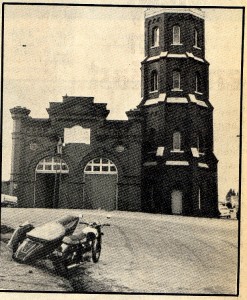
During his two Years at Ballarat Teachers’ College, from time to time the various colleges would have a day of inter-college sports. In August 1968 there was an inter-college visit planned with the Bendigo Teachers’ College. While most students would travel by bus, because of the odd numbers, a few would need to travel by car. Phil decided this would be a great time to travel by motorbike, instead. He liked riding alone: riding gave him a oneness with his natural surroundings that travelling by car or bus could never do. Knowing the ride home might be a very cold affair, he planned ahead by packing plenty of warm clothes in a bag in the sidecar. The sidecar was a 1946 Dusting which had been fitted to the 1966 Yamaha YDS3 250cc two-stroke twin motorbike at Pratt and Osborne Motors in Geelong a month or two earlier. The ride to Bendigo was glorious: horizon to horizon clear blue sky with the golden winter sun streaming down.
The day’s sporting events came and went and Phil was invited back to visit the college dormitory by some girls from Bendigo College who wanted to try out the sidecar.
The girls cooked a truly excellent meal and then followed an evening of chinwagging. At about midnight a member of staff reminded the resident students that it was an hour after lights out and time for their Ballarat visitor to return home.
Step one of departure preparation was to remove the uniform track suit and don the right sort of kit for a sub-zero motorcycle trip.
From the skin outwards and in this order, the clothing consisted of:
100% cotton Bonds athletic singlet,
100% cotton Bell’s Briefs,
100% cotton Bonds thermal top,
100% cotton Bonds long johns,
100% cotton Bonds skivvy,
100% cotton (denim) Motorbike Scrambler jeans,
100% cotton Exacto fleecy-lined WindCheater (approved gear for motorcycle racing),
The Herald (then a Melbourne evening newspaper about the size of the Age) wrapped around the front half of the upper body over the WindCheater and wrapped around the front of the legs over the jeans,
a thick hand-knitted 100% woollen jumper,
Belstaff oiled cotton waterproof motorcycling pants,
Belstaff oiled cotton waterproof motorcycling jacket.
Yellow high-visibility cotton over-vest.
Note that all these layers were fitted in the order listed with overlaps at the waist.
On the feet were 100% cotton knitted inner socks,
100% wool outer socks,
Holeproof Explorer socks,
Blundstone steel-capped brown suede work boots.
On the hands were a pair of Stadium fleecy-lined leather motorcycling mittens and a pair of Belstaff oiled cotton waterproof motorcycling over-mittens.
On the head was a 100% cotton balaclava (tucked into the neck of the skivvy),
a Bell “Jet” (open-face) helmet, and
a “fishbowl” style clear perspex visor attached to the helmet, with
a Stadium motorcycling peak attached over the visor. With his head tilted slightly forward, the peak kept the snow from the top part of his visor and the bottom of his visor fitted over the neck of the Belstaff jacket.
Phil probably looked like “the Michelin Man” as he waddled out to the outfit and kick-started it, but he was warm as toast having just left a furnace-heated college dormitory. It was about 12:20am when the engine buzzed into life and the outdoor temperature in Bendigo was – 0.5ºC. Out there at Flora Hill, it might have been a little colder than that. The interior and exterior surfaces of the visor had been well prepared using Esso Anti-Misting Tissues, but Phil’s breath was freezing to frost in his beard each time he breathed out.
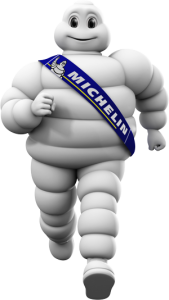
The moon was shining down and lighting the landscape as the little outfit wound its way slowly up into the mountains. Someone on the moon (but this was still almost a year before the first man walked on the moon in 1969) with a telescope might have thought this was a tiny solitary beetle which climbed ever so slowly across the grass-covered hills which looked so ghostly in the pale moonlight.
Climbing higher into the Great Dividing Range, the moonlight was replaced by heavy clouds and then steadily falling snow. Soon there was snow all over the road, a fearful aspect if riding a solo motorbike, but not a cause for any concern with the sidecar alongside to keep things stable. Thick white frost formed on the handlebars, mirrors and sidecar mounts.
Lockwood, Maldon and Newstead came and went without seeing another vehicle on the road. Short of Campbelltown the moon appeared again and it was time to re-fill the bike’s tank from the jerry can in the sidecar – no petrol stations anywhere would be open at that hour. Campbelltown, Smeaton, Creswick and Mount Rowan were passed by also without seeing another sign of human life. While passing through Ballarat, one lonely police car was seen to be patrolling and Phil exchanged cheery waves with the crew as he rode by. Out through Canadian, Mount Clear, Mount Helen, past “St Micks in the Styx” (Saint Martins in the Pines school campus) and down the hill to Buninyong. Quietly along Warrenheip Street, right into Learmonth Street, left into Cathcart Street, left into Scott Street and then cut the motor and roll silently downhill and into the yard to avoid waking anyone. It was about 03:10 am and officially about -1.5ºC in Ballarat but probably a couple of degrees colder in Buninyong. Despite the cold, Phil was still warm inside his Michelin Man mountain of clothes. Motorcycling can be so enjoyable regardless of the weather if the rider wears appropriate clothing.
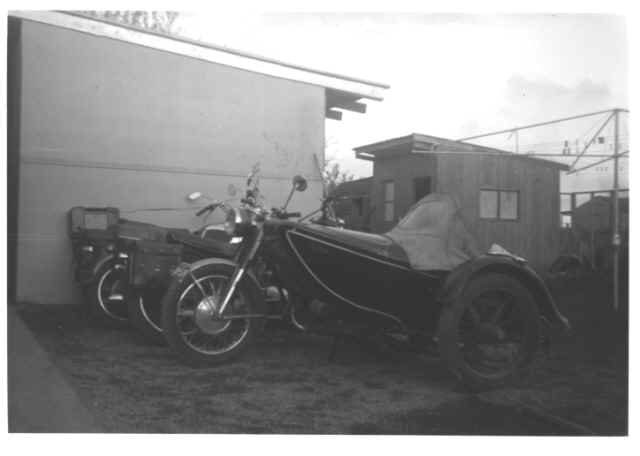
2015 Thoughts: Just reading through the article again, I can see many clues to the Autism with which I was diagnosed many years after having written it. Observe the obsession with detail in the clothing I wore for the freezing part of the journey. I clearly remember being extremely pedantic about the exact “correct” way to dress for motorcycling. Also there is my attention to detail regarding the little towns I passed through on the way.